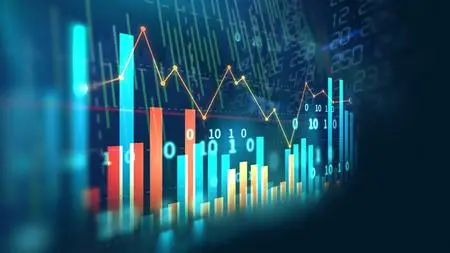Introduction to Probability and Statistics
Published 7/2023
Duration: 12h 44m | .MP4 1280x720, 30 fps(r) | AAC, 44100 Hz, 2ch | 3.5 GB
Genre: eLearning | Language: English
Published 7/2023
Duration: 12h 44m | .MP4 1280x720, 30 fps(r) | AAC, 44100 Hz, 2ch | 3.5 GB
Genre: eLearning | Language: English
Statistics and Probability
What you'll learn
Probability theory: Students will gain a solid foundation in probability theory, enabling them to analyze and quantify uncertainty in various scenarios.
Statistical inference: Students will learn how to draw conclusions and make predictions based on data. S
Data analysis: Essential techniques for analyzing and interpreting data. Students will learn about exploratory data analysis, descriptive statis
Probability distributions: Students will delve into the characteristics and applications of various probability distributions.
Requirements
Prerequisites include: a foundational mathematics course, proficiency in mathematics and basic calculus, computer skills for data analysis, and a commitment to dedicated study time.
Description
The Statistics and Probability course is designed to provide students with a comprehensive understanding of fundamental statistical concepts and probabilistic principles. This course equips students with the necessary skills to analyze data, make informed decisions, and draw meaningful conclusions in various fields and real-world scenarios.
The course covers a wide range of topics, starting with the basics of descriptive statistics, where students learn to organize, summarize, and present data using graphical and numerical methods. They gain proficiency in calculating measures of central tendency, such as mean, median, and mode, as well as measures of dispersion, including variance and standard deviation.
Moving on to inferential statistics, students delve into probability theory, understanding the foundations of probability and its applications in uncertainty and randomness. They learn to calculate probabilities of events, study probability distributions, and explore the concepts of independence and conditional probability.
The course further explores discrete probability distributions, focusing on the binomial and Poisson distributions. Students learn how to apply these distributions to model the occurrence of events and understand real-world phenomena, such as the number of successes in a fixed number of trials and the occurrence of rare events in continuous time.
In addition, the course introduces students to the Poisson process, a powerful tool for modeling events that happen randomly and independently over continuous time. Students grasp the process's key characteristics, including independent increments and varying intensity, and apply it to various fields, including queuing theory, telecommunications, and reliability engineering.
Throughout the course, practical applications and real-world examples are incorporated to help students develop a deep understanding of statistical concepts and their relevance in different domains. Hands-on exercises and projects enable students to gain proficiency in using statistical software and data analysis tools to extract meaningful insights from real datasets.
By the end of the Statistics and Probability course, students will have honed their ability to critically analyze data, perform statistical tests, and draw meaningful conclusions. They will be equipped with a solid foundation in statistical thinking, preparing them to make informed decisions and contribute to various fields, such as business, medicine, social sciences, and engineering.
Who this course is for:
Designed for a broad range of students and professionals who seek to develop a solid understanding of probability and statistics. It is commonly taken by undergraduate students pursuing degrees in mathematics, statistics, engineering, computer science, economics, social sciences, or related fields. Additionally, professionals in fields such as data analysis, finance, market research, and quality control may also benefit from this course to enhance their analytical skills and decision-making abilities.
More Info



